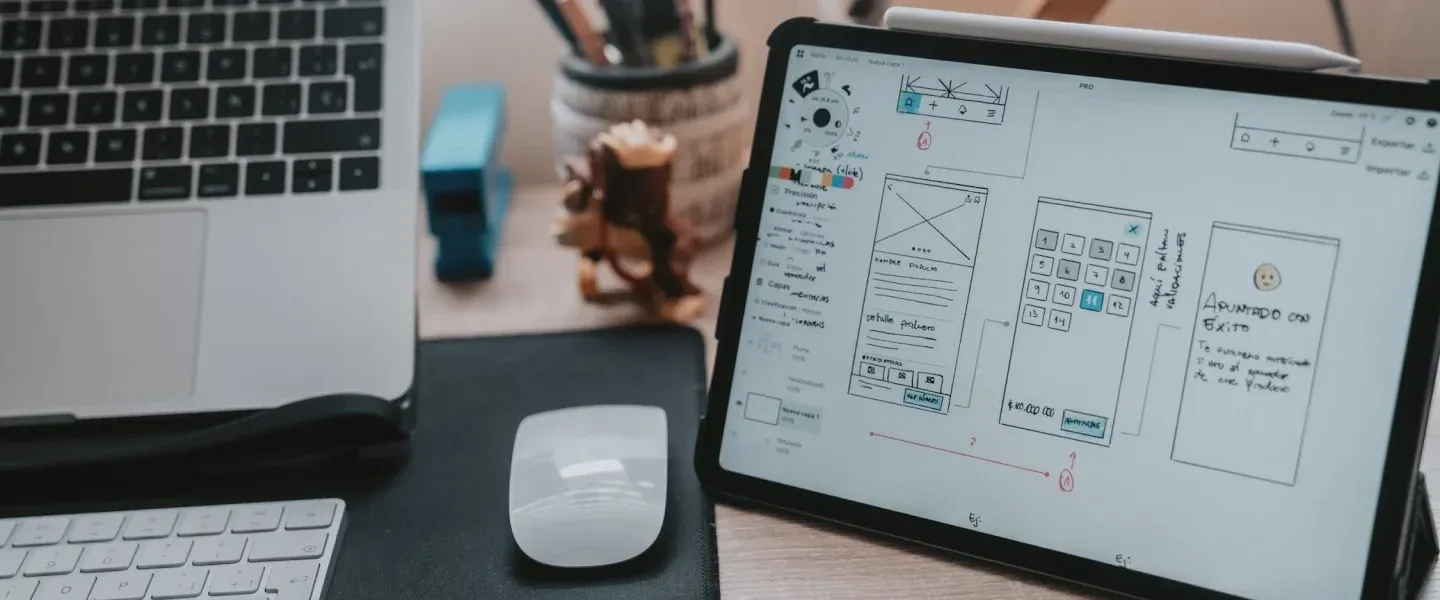In the development and designing world, both UX and UI are the most commonly used terms for web and app designing. Although they are commonly used interchangeably, these two concepts represent principal processes of designing using digital tools.
This article aims to debunk these terms, tell you about their individual responsibilities, how they affect each other, and how you can utilize them to develop a relevant digital environment through UI/UX Design.
What Is User Experience (UX)?
User experience, as a broad concept, covers all of the end-user’s aspects connected with a company, its products, and its services. The UX term stands beyond the digital boundaries. Experience is only the context of a user's entire experience with the service or a brand, once in particular.
UX involves understanding a user's path from the beginning to the end of the journey and designing web and app with the ultimate aim of improving the experience and the satisfaction of general users. You can think of interface design as choreography when each movement is planned for the harmony of smooth performance.
What Is User Interface (UI)?
User Interface refers to the concrete elements of interaction on a web page. These elements contain everything, from pages, screens, and visual elements such as icons and buttons to colour schemes, layouts, and typography. It is the significant connection point of the user with the digital device. It is like the painting of a masterpiece – where the visual aesthetics is highly critical.
Key tip from Innoraft:
A common misconception that many people believe is that UI/UX Design are the same. However, this confusion arises due to their close interconnection in the designing process. However, understanding the difference between the both is paramount. UI is the component of UX. However, UX encompasses a broader scope that consists of the interface and the whole process.
Relationship Between UX and UI
Recognizing and comprehending the UI/UX Design relationship is vital to creating a successful digital product. These two domains work collaboratively and are interconnected in order to provide a beautiful and smooth user experience.
UX and UI designers collaborate on the same project, focusing on interface design. UX designers focus on the whole user journey, showing how the user will interact with the product. They focus on how the user will navigate through the product, what actions will be taken, and what emotions can be thrown in.
On the contrary, the UX designers construct the blueprint, and the UI designers use the blueprint to create visual and functional interfaces. They can represent the abstract ideas of user experience in an interactive form and help users interact with it.
UI/UX Designing Process
Both UI/UX Designs are iterative processes. In other words, designs are constantly evaluated and refined based on user testing and feedback. For example, UI elements, such as a button, are adjusted in colour, size, or placement based on the preference and interactions of the user. These alterations aim to enhance the aesthetic appeal and functionality, directly affecting the overall user experience. Iteration ensures that the products evolve in response to a user's needs and are relevant while being user-friendly.
What Are The Benefits Of Implementing UI/UX Design?
The UI/UX Design not only refines the designing approach but also enhances the team dynamics and the success. Following are the benefits you can foster by implementing both UI and UX for interface designing:
Better Designing Outcome
When you comprehend the specific UI and UX interface design features, the stakeholders and designers can make user-centric and contributed design decisions. Hence, when UX principles are incorporated into the overall strategy, and UI elements make that alive, the overall product will be aesthetically pleasing. At the same time, users will find the product functional. This clarity ensures that at each step of the design process, you consider the users’ preferences and needs.
Data-Driven Evaluation Of Design Efficiency
A data-oriented and holistic approach is a direct consequence of a UI/UX Design approach devoted to emphasis. The development teams use the methodology consisting of the UX's usability and the UI's visual appearance to gather the metrics and complete feedback.
User satisfaction surveys, engagement, and usability test metrics will be valuable sources of insights into how the design aligns with the end users. A data-driven approach ensures continual refinement and optimization of the product. The result is a product that ensures that the application or website is good-looking from a user’s perspective and functional.
Better Communication and Collaboration
Possessing a firm knowledge of the difference between the UX and UI roles could refine the communication and collaboration between design teams. A workplace where every team member clearly understands their responsibility and can contribute effectively will result in a more cohesive and efficient workflow.
UX designers could do journey mapping, user research, and usability testing, while UI designers would focus on interactivity, visual design, and responsiveness. With this integration, more knowledge will be reached in each area of expertise, which will deliver better-quality results.
Conclusion
By understanding the unique contribution of User Experience and User Interface for UI/UX design, you can create digital experiences that connect deeply with the users. If you want your website or application to stand out, you must opt for interface design from both UI/UX Design experts.
